Technical Drawing
Technical drawings can be described as plans that show how a human-made object is constructed. A technical drawing is usually a diagram that illustrates an object from different angles (projections) to explain its structure (fig. 1). These diagrams are used in engineering, construction, and other industries involved in creating, constructing, and repairing (Technical drawing, 2022). They also act as a tool for communicating ideas between creators and makers. Thus, it is vital for a technical drawing to follow its own universal language that can be recognized by all professionals (Design Handbook, 2022). For example, a mechanical engineering drawing shows a component or product’s requirements (Singh and Singh, 2021). It can also reveal weaknesses in the design and guide producers on how to manufacture it perfectly.
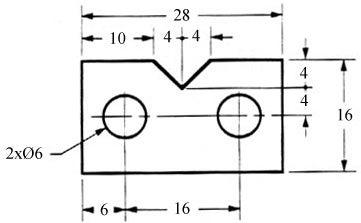
Another field where technical drawings are essential is architecture. Sketches and diagrams are also necessary for healthcare and software engineering (Vergara et al., 2021). Historically, technical drawings were drafted by hand, using tools (Maguire, Phelps and Simmons, 2020). These included a drafting table, a straightedge, T-square, compass, and more. The manual method can still be used today, although many of all drafting processes have been automated.
Computer-Aided Design
Computer-aided design (CAD) is software used to create digital technical drawings. There are two main subcategories of CAD products – programs working with 2D and 3D graphics (fig. 2). CAD offers many benefits to creators and producers of products. First, the programs were developed on the basis of the universal language to which technical drawings must adhere (Fuller, Ramirez and Smith, 2021). Therefore, an engineer using such software can ensure that all markings and lines correspond to those understood by other professionals.
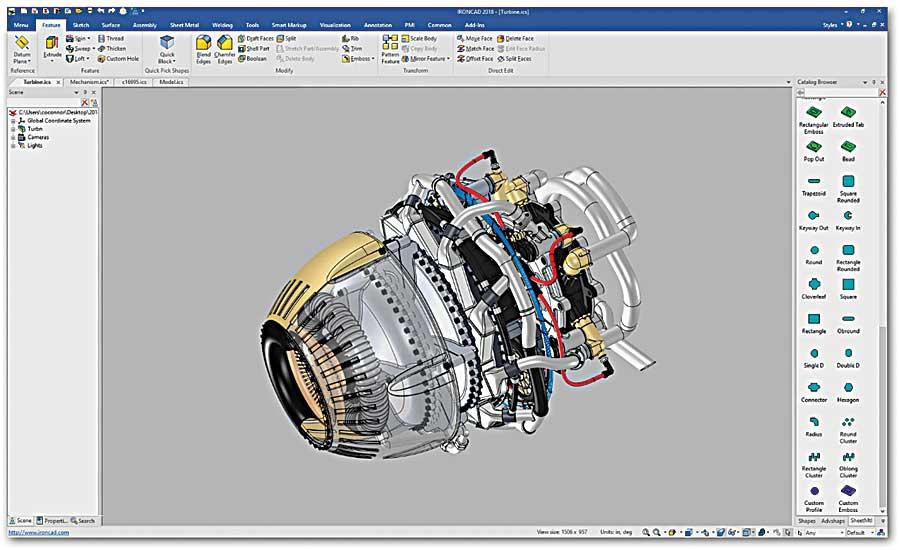
Moreover, the use of CAD leads to quicker project completion and higher productivity rates (Inc., 2020). A user can quickly change a drawing, zoom in or out, remove and add elements, and observe a drafted object from different perspectives (Llach, 2021; Sarkar, 2018). Therefore, CAD software is vital in manufacturing industries where the quality of one detail can impact the whole product. However, each CAD program has unique traits, meaning that an engineer must know the specifics of using various software. One of the most significant advantages of advanced CAD software is the ability to simulate an object’s performance in motion. Thus, the use of CAD simplifies the initial trial step in any design process.
Theory of Projections
Orthographic
To depict a 3D object in a 2D form, one has to represent it from one or several angles. Orthographic projection is used to represent a 3D object by using 2D drawings of its different viewpoints. The main views are called plan (top), front, and side, and a technical drawing is separated into four quadrants where these views are placed (Khumaedi et al., 2021). In some cases, an object’s diagram does not need all three views; in others, additional projections are required. There are two types of orthographic projection – first and third angle – they differ only in the way of putting the views onto the drawing (fig. 3).
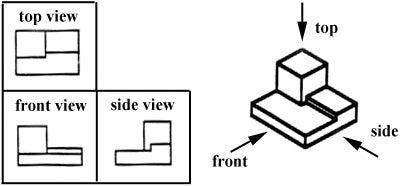
First Angle
The first type of orthographic projection is the first angle projection. This approach to drawing is primarily used in European and Asian countries (Rahbarianyazd and Nia, 2019). In the first angle projection, the first quadrant contains the front view of an object, while the second and third quadrants depict the side and plan views (Rahbarianyazd and Nia, 2019). To draw a first-angle projection, one can imagine that the object is placed between the person drawing and the projection (fig. 4). Therefore, the product is placed above the horizontal plane and in front of the vertical plane, and the projection plays the role of paper (Rahbarianyazd and Nia, 2019). As a result, the observer sees through the object. To distinguish the first angle projection, technical drawings are marked with a specific symbol (fig. 4).

Third Angle
The third angle projection imagines the object and the diagram differently. This projection theory is used mainly in the United States and has a specific marking (fig. 5). One can describe the drawing as if the object were put in a clear box or behind a transparent wall. This is the projection – it is placed between the observer and the detail being drawn (fig. 5). On the technical drawing, the object is in the third quadrant, and the other views are placed in the first and second ones (Rahbarianyazd and Nia, 2019). It is imagined that the object is situated behind the vertical and below the horizontal plane. As a result, the engineer sees the side and top of the object the same way they are depicted on the drawing.

Axonometric (Pictorial)
While objects’ views are separated into sides in orthographic projections, axonometric projections display the plan, front, and side views in one drawing. This provides more visualization but a less clear representation of dimensions than an orthographic projection. As all three views are put into one illustration, the axes of the objects’ bodies have to be changed (foreshortened) according to the perspective that the observer assumes (Bi and Wang, 2020). For example, when one looks at a detail from one of its axes at an angle, some sides appear shorter than they are in real life (fig. 6). There are three categories of axonometric projection: dimetric, isometric, and trimetric, based on the three axes of projection.
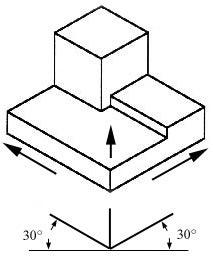
Dimetric
The differences between the projections are based on the ways in which axes are changed in relation to each other. In a dimetric projection, two of the three axes are foreshortened equally, and the third axis’ foreshortening is scaled separately (fig. 7). Therefore, one side is more distorted than the two others, which leads to the drawing being more approximate than precise (Tornincasa, 2020). A dimetric projection does not have a strict angle at which it is used – the observer determines it. However, as two axes are scaled in the same way, some knowledge of measurements is necessary to represent the object. Dimetric projection is not the most commonly utilized method as it requires complex angle calculations and approximation of the third axis’ scaling.
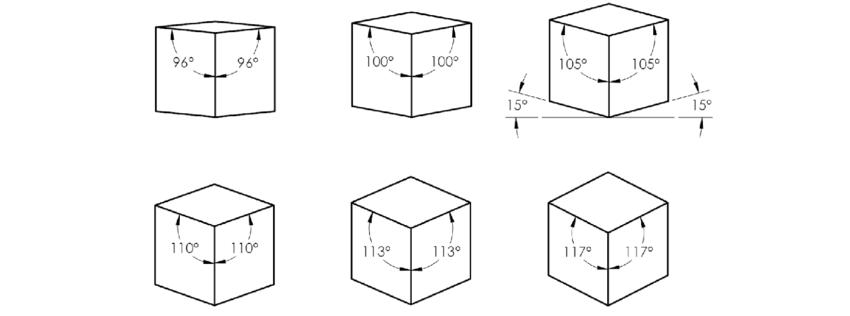
Isometric
Isometric projections are more common in technical drawings than in other axonometric types. In this projection, all three axes are foreshortened the same amount (fig. 8). Therefore, there is a standard angle of 120° between all axes – this angle separates the whole projection into three equal parts (Tornincasa, 2020). This approach is also the easiest to work with, as one can use simple tools to construct a technical drawing. In isometric projections, all axes change equally, which means that no approximations have to be made. These characteristics of isometric drawings make them the most reliable and precise out of all axonometric projections. They are also helpful for the design element of engineering, depicting a 3D object as it could be seen in real life.
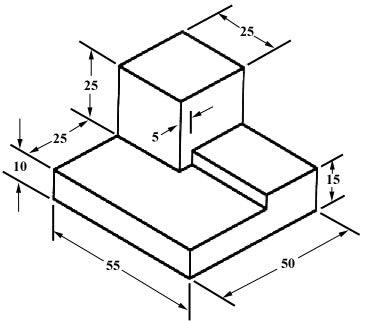
Types of Lines and Their Use
Lines in a technical drawing can be continuous, dashed, or chain; the thickness of lines is important as well as their form (fig. 9). There are ten mainline types that can be used in a technical drawing. The first type is a continuous thick line that represents the visual outlines of an object (Saif, 2021). A thin continuous line can note an imaginary, dimension, or projection line (Saif, 2021). For example, if a drawn detail is a part of a larger product, thin lines can help place it in the structure.

Zig-zag and wavy (freehand) lines denote the object’s boundaries, limits, and breaks (Saif, 2021). Dashed lines usually depict outlines and edges that appear hidden in the chosen view, as if the detail were transparent (Saif, 2021). The last category of mainline types is chain lines, where short and long dashes are combined. For example, a thin chain line represents the lines of symmetry in an object as well as the center and trajectory of the drawing (Saif, 2021). A thick chain line can denote the area or specific line that requires a different treatment.
Scaling
It is clear that not all details can be drawn to their full size. For this reason, all technical drawings are drawn to a specific scale for producers to build the object according to its true dimensions (Tornincasa, 2020). For example, a full-scale drawing means that the diagram and the detail have the same measurements (such as length, width, and other parameters) (fig. 10). Smaller objects can be scaled up – all numbers being multiplied by the same number to draw the detail larger than it is in reality. In the same way, large products are scaled down in a technical drawing.
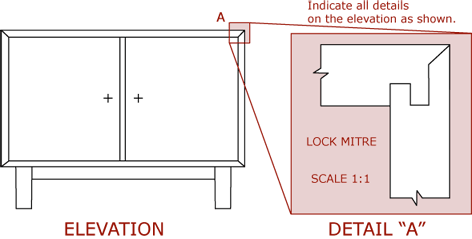
Many types of scale exist, according to the drawing’s purpose and the measurement system used in the project. For instance, large objects (such as aircraft) have to be significantly scaled, where 1 inch can represent up to 100 feet (Tornincasa, 2020). There is also a metric-based scaling system, where one millimeter is used as the base measurement (Design Handbook, 2022). Here, a small detail can be drawn on a 2:1 scale (2 millimeters of a drawing for 1 millimeter in real life), while a 1:50 scale can help illustrate large objects.
Dimensioning
While the visual representation of detail is important, it cannot be used in production without knowing its actual measurements. Thus, another critical part of the drawing process is dimensioning – the addition of size information (Design Handbook, 2022). A well-dimensioned and described part can be easily rebuilt as the drawing contains all the needed data (Design Handbook, 2022). However, it is vital to dimension the object properly so that all numbers are easily interpreted by manufacturers (fig. 11).
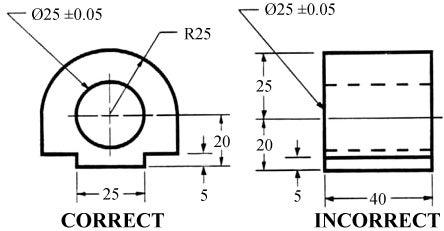
For that reason, dimensioning also follow the universal rules of technical drawing. The numerical value (dimension) is placed near the dimension lines that show the extent of the size (Maguire, Phelps and Simmons, 2020). An arrow is placed at the ends of these lines to show where the dimensioned line ends (Maguire, Phelps and Simmons, 2020). Together, these elements create a clear representation of each part of the object. Furthermore, a drawing can also include tolerance – a number to which the dimension can vary (Design Handbook, 2022). Also, some drawings can feature limits of the size that represent the maximum and minimum measurements for the specific detail (Maguire, Phelps and Simmons, 2020). The addition of these elements depends on each particular drawing.
Auxiliary Views, Sections, and Sectional Views
An auxiliary view is an additional view that is necessary when an object’s plan, front, and side perspectives are not enough. For example, if a detail has an inclined surface, it may not fully appear on a simple orthographic projection (Singh and Singh, 2021). For this reason, an auxiliary view of this particular surface and its connection to the figure is added to the drawing (Singh and Singh, 2021). It should be noted that the auxiliary view is represented on the drawing following its perspective – it is placed perpendicular to the angle where the unseen surface is shown from the side (fig. 12).
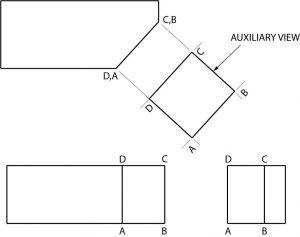
Some details cannot be reproduced without knowing how they are structured on the inside. Here, one may use a section or a sectional view of the object (fig. 13). It is a look inside the detail as if it were cut and opened up (Singh and Singh, 2021). A sectional view usually shows an object cut in half, and special lines show the symmetry and center of the object to signify the cut’s location (Singh and Singh, 2021). In most cases, the material is also indicated with shading to show the hollow parts of the detail.

Reference List
Assembly (2020) ‘Updated 3D CAD program,’ Web.
Basic Civil Engineering (2015) ‘Different between 1st angle projection and 3rd angle projection in drawing’, Web.
Bi, Z. and Wang, X. (2020) Computer-aided design and manufacturing. New York: John Wiley & Sons.
Camba, J. D. (2014) ‘16 different angles for dimetric projections’, ResearchGate. Web.
Costin, R. (2022) Basic blueprint reading. Portland, OR: Open Oregon Educational Resources.
Design handbook: engineering drawing and sketching (2022) Web.
Fuller, A., Ramirez, A., and Smith, D. (2021) Technical drawing 101 with AutoCAD 2022: a multidisciplinary guide to drafting theory and practice with video instruction. New York: SDC Publications.
Inc. (2020) ‘Computer-Aided Design (CAD) and Computer-Aided Manufacturing (CAM)’, Web.
Khumaedi, M., Widjanarko, D., Setiadi, R. and Setiyawan, A. (2021) Evaluating the impact of audio-visual media on learning outcomes of drawing orthographic projections. International Journal of Education and Practice, 9(3), pp. 613-624.
Llach, D. C. (2021) Between form and information: early philosophies of computer-aided design. Nexus Network Journal, 23(4), pp. 933-943.
Maguire, D., Phelps, N. and Simmons, C. (2020) Manual of engineering drawing: British and international standards. London: Elsevier Science.
Rahbarianyazd, R. and Nia, H. A. (2019) Introduction to architectural and technical drawing: a practical handbook. Fatih: Cinius Yayınları.
Saif, M. (2021) ‘10 different types of lines used in engineering drawing’, The Engineers Post, Web.
Sarkar, C. K. (ed.) (2018) Technology computer-aided design. Boca Raton, FL: CRC Press.
Scale drawings (2022) Web.
Singh, L. P. and Singh, H. (2021) Engineering drawing: principles and applications. Cambridge: Cambridge University Press.
Technical drawing (2022) Web.
Tornincasa, S. (2020) Technical drawing for product design. Cham: Springer.
Vergara, D., Rubio, M.P., Extremera, J. and Lorenzo, M. (2021) Interdisciplinary learning methodology for supporting the teaching of industrial radiology through technical drawing. Applied Sciences, 11(12), p. 5634.